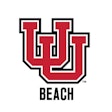Copyright 2018 Charleston Newspapers
Charleston Gazette-Mail
There is a way that college football programs use to get top prospects through the door that has grown in recent years.
Make sure it's a really fancy door. Same for the hallway and every other room.
Facility spending has ballooned as those amenities have become the new arms race in college football. The chairs and couches all are wrapped in rich leather. Huge televisions deck the walls throughout. If a players lounge doesn't include a barber shop, it's behind the times.
Clemson's $55-million upgrade to its football facility spawned a miniature golf course, Whiffle ball field and giant slide. Even Kansas, it of eight wins since 2012, broke ground in April on a new indoor football facility spurred by a $50-million donation.
When asked about it, Big 12 Commissioner Bob Bowlsby said he could answer two ways. First, he wore the cap of conference commissioner, someone tasked with maintaining the health of every team under his umbrella.
"We certainly are spending a lot of money on brick and mortar and on support facilities and on support personnel, he said. "The arms race is alive and well.
Then he tossed the commissioner hat aside and pulled out his old athletic director's hat. Before overseeing the Big 12, he was AD at Northern Iowa, Iowa and Stanford. At that level, the mission is to ensure your own school's long-term health, the health of adversaries be damned.
"The only thing worse than being in the arms race is not being in the arms race, Bowlsby said, "because you fall behind and you don't have the tools that you need to get the job done. So there's a balance.
Some coaches, however, wonder if a balance really is there. Kansas State coach Bill Snyder admits he's old school. The 78-year-old began his coaching career when game film was captured on actual film. He's not saying that strong facilities aren't important, but he asked why other parts of the college experience aren't viewed at the same level.
"You look at it from a standpoint of if I'm a professor at a university I'm going to ask the question, what's really important here? he said. "Is it education or is it football? A professor that has an office the size of a closet and as coaches we've got offices as big as this indoor facility. You ask the question, why?
Snyder may question those priorities, but that didn't stop Kansas State from sinking $65 million into a new football facility that opened in 2015. And the answer to the question "Why? might best have been offered by Kansas coach David Beaty.
"[Recruits are] looking at universities, and we stimulate them when they come to campus, he said. "I believe sometimes they're ruling people out and they don't realize it. They're unique in terms of the way they think. They do operate off being stimulated and a lot of people have gotten that and understood it.
Then he looked around at his surroundings in the Ford Center, the Dallas Cowboys' indoor practice facility housed at the Star in Frisco.
"Look no further than this place right here, he said. "These people get fan experience. They get what fans want. This place is phenomenal.
Marshall football coach Doc Holliday, long considered a top-level recruiter, has an often-used saying that fits this scenario: People buy with their eyes. And if a prospect walks through the front door, a college coach wants to see those eyes open wide in wonder, not horror. Dingy digs might send that prospect down the road to that team's rival.
Beaty has won three games since taking over at Kansas. He also has a new AD in Jeff Long, so the temperature on his seat could spike if Long doesn't see immediate improvement. That improvement can come by signing a better caliber of athlete. And that better athlete will be more likely to sign if he sees a university proactive in improving his college experience.
Does that make non-sports fans shake their heads? Does it send professors' blood to a boil? Sure. But college athletics is a multibillion-dollar business. That's "billion with a big ol' "B. Last year, Big 12 schools each received $36.5 million in revenues from the conference. Eighty percent of that came from the league's television contracts and football bowl revenue.
So while some may question it, there's little chance of this race moving backward. College athletic programs are in it to win it. And that might mean building a waterfall in the entrance of the football building.
"No question there is a robust arms race on, Bowlsby said, "and I don't see it slowing down anytime soon because that's not the nature of the competition we're engaged in.
Read More of Today's AB Headlines
Subscribe to Our Daily E-Newsletter
Terms and Conditions Privacy Policy



































